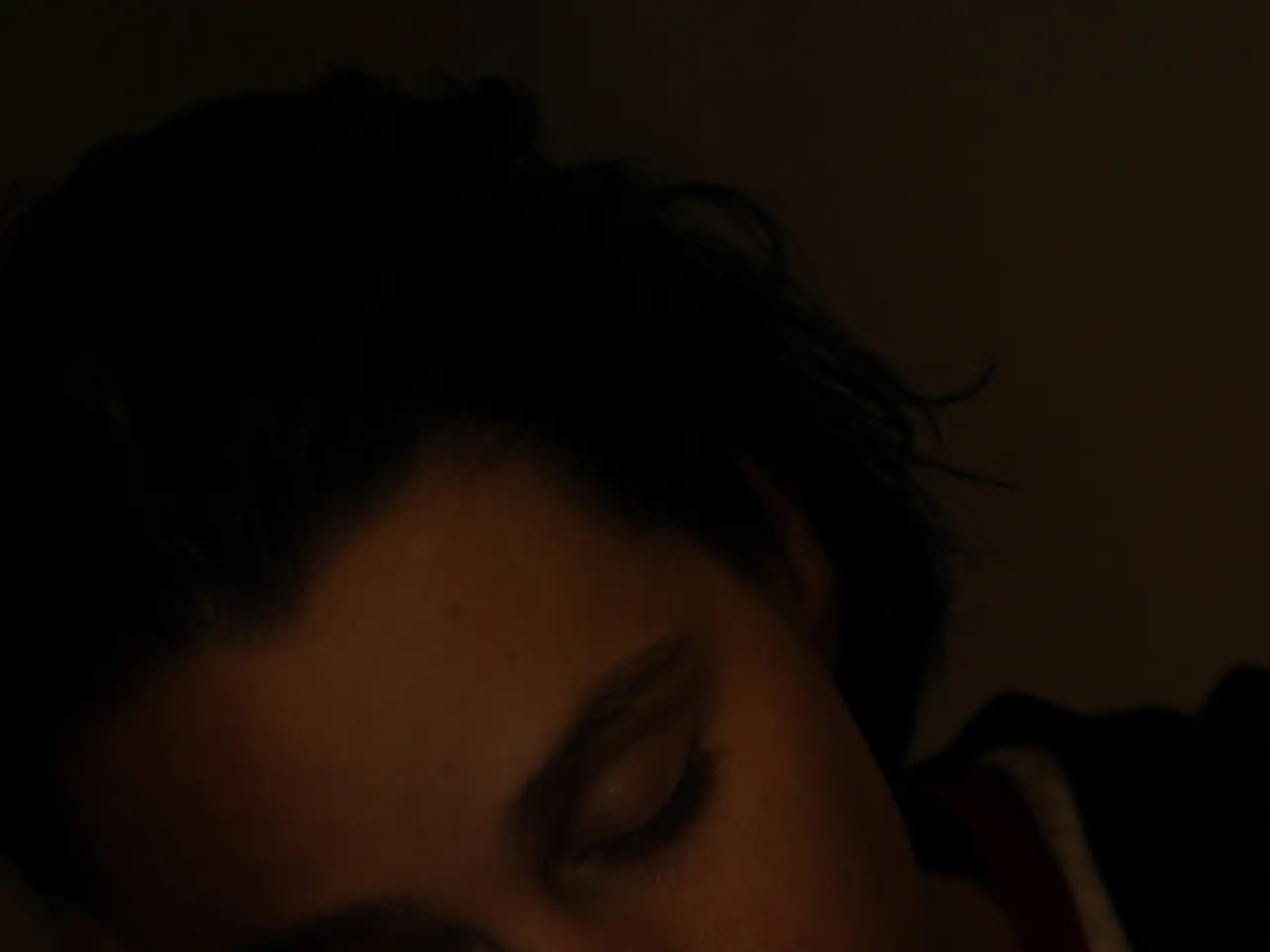Sleep Apnea Classifications: Obstructive, Central, and Complex Sleep Apnea
Obstructive Sleep Apnea (OSA) is a common sleep disorder that affects millions of people worldwide. This condition is characterised by disrupted breathing during sleep, leading to a variety of symptoms that can impact a person's quality of life and health.
One of the most noticeable symptoms of OSA is loud snoring, often audible to a bed partner. Another symptom is pauses in breathing during sleep, sometimes accompanied by gasping or choking for air, leading to repeated awakenings. Daytime sleepiness, characterised by difficulty staying awake, especially during passive activities, is also a common symptom. Morning headaches, reported by up to 30% of people with OSA, are often felt as squeezing pain on both sides of the front head. Frequent nighttime awakenings and restless tossing and turning during sleep, sometimes mistaken for insomnia, are also common.
OSA occurs when there is a functional obstruction in the mouth and throat. Examples of obstructions in OSA include the tongue falling against the soft palate during sleep. This obstruction causes the airway to narrow, leading to the disrupted breathing patterns associated with OSA.
The right treatment can help a person get a good night's rest and may reduce the risk of chronic health problems. The most common treatment for OSA is Continuous Positive Airway Pressure (CPAP) therapy. This gold standard treatment involves a machine that delivers steady air pressure through a mask to keep the airway open at night. CPAP therapy is typically the first choice for moderate to severe OSA.
Bilevel Positive Airway Pressure (BiPAP) is another treatment option, similar to CPAP but providing higher air pressure during inhalation and lower during exhalation. BiPAP is used for patients who can't tolerate CPAP or have additional conditions like obesity or COPD.
Lifestyle changes can also help reduce symptoms of OSA. Weight loss, avoiding alcohol and sedatives, sleeping on the side, and quitting smoking are all effective strategies. For mild to moderate OSA, or for those intolerant of PAP therapy, oral appliances may be used. These devices, fitted by dentists, help keep the airway open by repositioning the jaw or tongue.
In severe cases, surgery or implantable devices may be considered. However, these treatments are less common and depend on individual patient assessment.
It's important to note that central sleep apnea, a different form of sleep apnea, inhibits breathing at night due to neurological causes, not upper airway obstruction. Central sleep apnea can sometimes be idiopathic, meaning doctors cannot identify an underlying disease.
If you or someone you know feels tired during the day or wakes frequently at night, it's a good idea to consult a doctor about undergoing a sleep study. Early diagnosis and treatment can significantly improve the quality of life and reduce the risk of chronic health problems.
[1] American Sleep Apnea Association. (n.d.). What is Obstructive Sleep Apnea? Retrieved from https://www.sleepapnea.org/about-osas/
[2] Mayo Clinic. (2021, February 11). Obstructive sleep apnea. Retrieved from https://www.mayoclinic.org/diseases-conditions/obstructive-sleep-apnea/diagnosis-treatment/drc-20372931
[3] National Heart, Lung, and Blood Institute. (2021, April 15). What is Obstructive Sleep Apnea? Retrieved from https://www.nhlbi.nih.gov/health-topics/obstructive-sleep-apnea
[4] National Sleep Foundation. (2021, March 18). Obstructive Sleep Apnea. Retrieved from https://www.sleepfoundation.org/sleep-disorders-problems/obstructive-sleep-apnea
[5] WebMD. (2021, March 18). Obstructive Sleep Apnea. Retrieved from https://www.webmd.com/sleep-disorders/obstructive-sleep-apnea-osas#1
- Obstructive Sleep Apnea (OSA), a common sleep disorder, is known for its disrupted breathing during sleep, marked by loud snoring and pauses in breathing that may lead to gasping or choking.
- Morning headaches, experienced by up to 30% of people with OSA, are often characterized by squeezing pain on both sides of the front head.
- Frequent nighttime awakenings and restless sleep, sometimes mistaken for insomnia, are also symptoms associated with OSA.
- The functional obstruction in the mouth and throat during sleep, such as the tongue falling against the soft palate, causes the airway to narrow, leading to the disrupted breathing patterns of OSA.
- The right treatment, like Continuous Positive Airway Pressure (CPAP) therapy, can help improve the quality of life and reduce the risk of chronic health problems in individuals with OSA.
- Bilevel Positive Airway Pressure (BiPAP) treatment, similar to CPAP but with higher air pressure during inhalation and lower during exhalation, is an option for patients who can't tolerate standard CPAP or have additional conditions like obesity or COPD.
- Lifestyle changes, such as weight loss, avoiding alcohol and sedatives, quitting smoking, and sleeping on the side, can help reduce OSA symptoms.
- If you or someone you know experiences daytime sleepiness or frequent nighttime awakenings, it's recommended to consult a medical professional to investigate potential sleep disorders like OSA and prepare for a sleep study.




